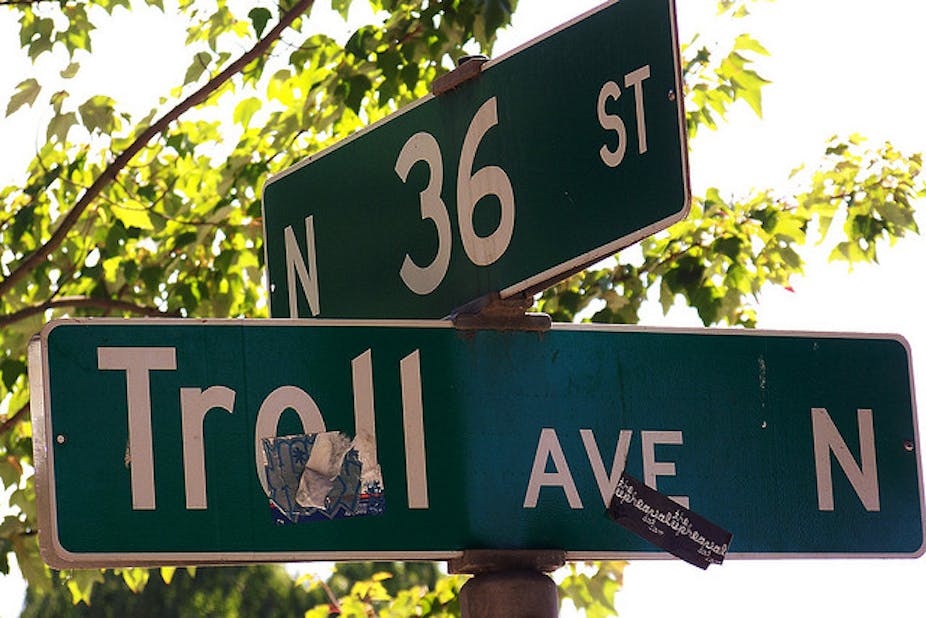In the US this week there’s been another outbreak of proposals to fix the “patent troll” problem.
A new bill from Representative Bob Goodlatte suggests changing the nation’s patent law to punish trolling or increase the resources of the USPTO (the patent registrar).
These proposals aren’t an effective solution, given the disagreement and general lack of consensus within the business community about what constitutes “trolling”. Instead, the proposals are likely to further complicate the law and add to the workload of US courts in interpreting that law.
Earlier in the year, New Zealand took a stab at combating excessive patent disputes surrounding software.
Their Patent Bill received royal assent and is coming into effect. The legislation is attracting international attention, and some raised eyebrows, after claims that software patents would soon become a relic of the past. The reality is a little more complicated and a lot more interesting.
Patent law provides the holder with exclusive rights to exploit or use an innovation in any way they see fit. Those rights typically last for twenty years and are legally enforceable. They concern a specific “invention” – which might be a device or an original process – rather than a scientific discovery or what is deemed to be “obvious”.
In essence, patent law provides an incentive for creativity and investment. It is a central but controversial feature of the information economy. Some critics, for example, argue that patent protection, which often results in a short term monopoly that can be exploited by patent holders, stifles innovation. Other critics claim that protection is simply unnecessary, with manufacturers usually relying more heavily on exemplary service and rapid product redesign.

Advocates of protection on the other hand argue patent law provides an incentive for the investment required for the development of pharmaceuticals and other products that are socially beneficial but involve substantial infrastructure and years of work.
One court famously commented that “Patent law is a rather artificial, highly complex and somewhat refined subject”. It is however an area of law that has been used by innovators in the development of products that range from zippers and children's’ toys to 3D printers, surgical stents, mobile phones, ABS brakes and Viagra.
So, this begs the question: is software – machine-readable instructions for the operation of a device – an invention?
Patent legislation in Australia, Canada, the US, Europe and elsewhere typically does not specifically refer to software. However, our courts and patent registrars – the government bodies administering the patent system – have broadly accepted that software can be patented. Protection under that law specifically relates to the novel way of doing things rather than any specific code.
The emphasis on novelty means that individuals and organisations seeking protection for software face difficulties, because most software builds on previous products and thus is not sufficiently innovative. Software is thus comparable to scientific research, where most researchers are standing on the shoulders of giants and truly epochal breakthroughs are rare.
In Australia, consistent with the High Court’s interpretation of “invention” in the 1959 NRDC v Commissioner of Patents judgment, software can be patented. That protection applies regardless of whether the software is freestanding or embedded in a device via a computer chip – for example in office machines, cars and “smart” domestic appliances.
New Zealand has headed in a different direction, one that will presumably result in trade disputes with partners such as the US.

The new legislation is unique as it provides protection for “embedded” software, but excludes other software. Instructions that are not embedded - not specific to the particular device and not found on a chip - will not be protectable under patent law. They thus will not be subject to claims of patent infringement.
This type of software will still be protected under copyright law. However, that law provides weaker protection than patents because copyright deals with expression rather than functionality. Essentially, if you rewrite the code you are no longer infringing the copyright.
This new legislation is a conundrum. It comes at a time when Australia and New Zealand are standardising their intellectual property regimes to strengthen the bi-national Trans Tasman Market, including standardisation of patent practice. The law means that what is able to be protected in Australia, is not able to be protected in the Land of the Long White Cloud.
Despite this, we are not likely to see software developers fleeing across the Tasman to Australia. Some will stay at home and register their innovative software developments in Australia, the US and other patent-friendly jurisdictions. Some will continue to embrace Open Source, emphasising low cost or customisation for niche markets.
New Zealand’s exceptionalism in patent law takes it out of step with its trading partners, most of whom are strengthening rather than weakening patent protection. The benefits of the legislation for consumers and software developers are unclear. It is likely we will see a u-turn as NZ politicians recognise that global competiveness involves more than agriculture and tourism.
The global struggle surrounding patent disputes suggests Australia should be wary of calls for quick-fixes. A real solution is going to be much more complicated than the elimination of non-embedded software patents or special anti-troll provisions.

